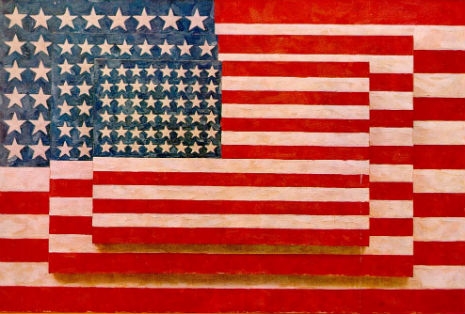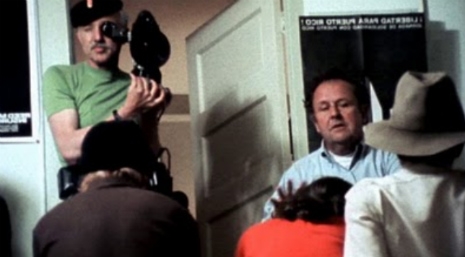
Jasper Johns’ ‘Three Flags,’ 1958
Painters Painting is a definitive documentary history of the New York Art Scene 1940-1970. Directed by Emile de Antonio, the film focuses on American art movements from Abstract Expressionism to Pop Art. De Antonio was a Marxist film-maker who was once described as “…the most important political filmmaker in the United States during the Cold War.”
In the 1960s and 1970s, De Antonio established his reputation with a series of political documentaries including Point of Order (1964) on the Senate Army-McCarthy hearings of 1954; Rush to Judgment 91967) investigating the aftermath of the Kennedy assassination; Millhouse: A White Comedy (1971) which followed Richard Nixon’s political career; and as co-director, Underground (1976) on the Weathermen.
De Antonio claimed he was able to make Painters Painting (1972) as he knew all of the artists involved:
“I was probably the only filmmaker in the world who could [have made Painters Painting] because I knew all those people, from the time that they were poor, and unsuccessful and had no money. I knew Warhol and Rauschenberg and Jasper Johns and Stella before they ever sold a painting, and so it was interesting to [make this film].”
His close relationship with these artists allowed some incredibly candid interviews from the likes of Willem de Kooning, Jasper Johns, Robert Rauschenberg, Helen Frankenthaler, Frank Stella, Barnett Newman, Hans Hofmann, Jules Olitski, Philip Pavia, Larry Poons, Robert Motherwell, and Kenneth Noland. Though, as ever, Andy Warhol deflected questions, claiming Brigid Berlin painted his pictures—though he had previously claimed everything he knew about painting he had learned from “De.”
With thanks to Christopher Mooney!






